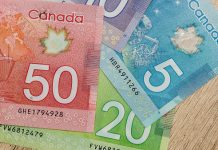On Monday morning, Brent and WTI are gaining in value. This is facilitated by the overall high demand for commodities, which has been observed since the beginning of summer. Also, the pause in negotiations on the resumption of the nuclear deal with Iran, which may indicate a delay in supplies from OPEC, played a role.
Brent futures for August has gained 35 cents, or 0.5%, to $73.86 a barrel since the start of the Monday session. WTI for July rose 41 cents, or 0.6%, to $ 72.05 in the morning. The rebound also pushed spot oil prices in Europe and Asia to multi-month highs.
Overall, both contracts continue the uptrend of the past four weeks, finding drivers in an increasingly optimistic pace of vaccinations around the world and resumption of flights over the summer holidays.
On the currency market, EURUSD remains under pressure around early April levels after its strongest weekly drop in three months.
Investor interest in risky assets faded after St. Louis Federal Reserve Chairman James Bullard said on Friday that the regulator’s move to a faster monetary tightening was a “natural” response to economic growth. In particular, on the situation with inflation: its increase is ahead of forecasts, as the country is recovering from the pandemic.
Against this background, the most likely scenario is a serious strengthening of the dollar against the euro. Unless of course there are significant changes in European interest rates, and if EURUSD fails to break above 1.1970.
At the same time, we should not count on a stable exchange rate of the American currency: the central banks of other countries must first approve a plan to normalize national policies as their economies recover from the consequences of the pandemic, and the main indicators rise from depressive levels.













